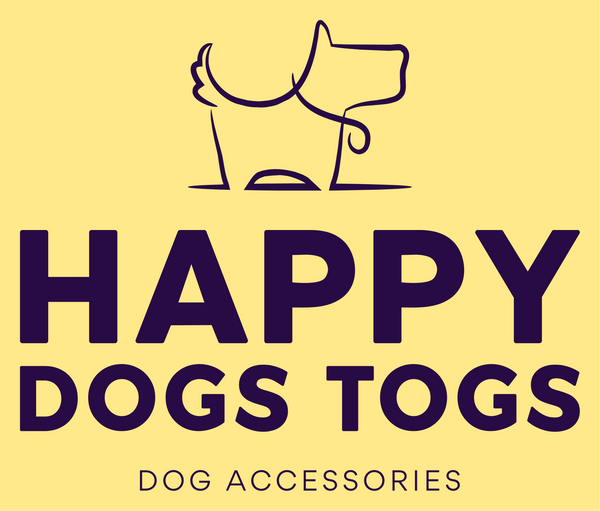A dog collar is like a must-have accessory for your furry friend to keep them safe and help in training. Before you rush to the pet store, it's good to know about the different types of collars available and pick the one that suits your dog the best.
6 Different Types of Dog Collars
1- Flat-collar
These are the regular collars you usually see. They're often made of nylon, rubber, or leather and sit flat against your dog's neck. They usually have a metal loop, called a D-ring, to attach tags and a leash. Flat collars work well for dogs who walk nicely without pulling on the leash. If your dog tends to pull, this type of collar can strain their neck or even slip off. Still, it's a good idea for your dog to wear a flat collar all the time. You can use other collars or a harness along with the flat collar for added safety.
2- Martingale Collar
The martingale collar also called a limited-slip collar, is like a mix between a regular collar and a slip collar. It gives you more control over your dog without the risk of choking them. These collars are great for dogs with slim heads, like Greyhounds or Whippets, who might slip out of a regular collar easily. They slide over your dog's head and sit high on the neck, just below the jawbone. When your dog pulls on the leash, the collar tightens slightly, but it doesn't choke them. When your dog relaxes, the collar loosens again. However, it's important to remember that a martingale collar shouldn't replace a flat collar entirely. It's also not safe to leave a dog unsupervised with a martingale collar in case it gets caught on something.
3- E-Collar
The e-collar, commonly referred to as a "shock collar," is a type of training collar for dogs. It operates by sending a small electric pulse through metal contact points inside the collar. It can be employed to keep a dog within a certain area. Some versions can be controlled remotely and are intended to grab the dog's attention using electric pulses, vibrations, or tones. There's much discussion about whether e-collars are effective and safe, and whether they should only be utilized under the supervision of a trained dog trainer.
4- Headcollar
The headcollar, also called a head halter or halter collar, is a type of collar that goes over your dog's snout and fastens behind their ears with a clasp. It's a great choice for gently teaching your dog to stay focused during walks. Because of its special design, it puts less pressure on your dog's windpipe and makes it harder for them to bark or pull while walking. However, like any training tool, it may not suit every dog (some dogs might panic or become too passive) and should be used with guidance from a professional.
5- Slip Collar
The slip collar, also called a choke chain collar or choke collar, tightens around your dog's neck when they pull on the leash. This tightening is meant to signal to your dog to stop pulling. While slip collars can be effective if used properly, they pose a risk of choking and can strain your dog's neck and windpipe if not used carefully.
6- Harness
A dog harness is a type of gear that wraps around your dog's body instead of their neck. It goes around the front legs and fastens with a clasp on the top of the back. Harnesses are particularly favored for small dog breeds because they don't strain the neck and are difficult for the dog to wiggle out of.
How To Choose The Right Dog Collar?
Consider these factors when you’re choosing a dog collar:
Size: When selecting a dog collar, use a measuring tape to measure your dog's neck in inches. Make sure the collar fits snugly but isn't too tight—you should be able to slip a finger underneath.
Material: Dog collars come in various materials. Nylon collars are common, affordable, easy to clean, and durable. Leather collars look stylish but may not be practical for all dogs. Rubber or silicone collars are suitable for dogs who love water.
Clasp: Collars can have different clasps. Buckle collars use a plastic or metal buckle for closure. Breakaway collars are designed to come undone under pressure to prevent accidents.
Leash attachment: Most collars have a D-ring for leash attachment. Harnesses allow you to attach a leash to the chest or top of the back, offering more control during walks.
Training: Flat collars and harnesses are good for walks but may not help with training. Consider a training collar if your dog pulls on the leash, and use positive reinforcement for leash training.

